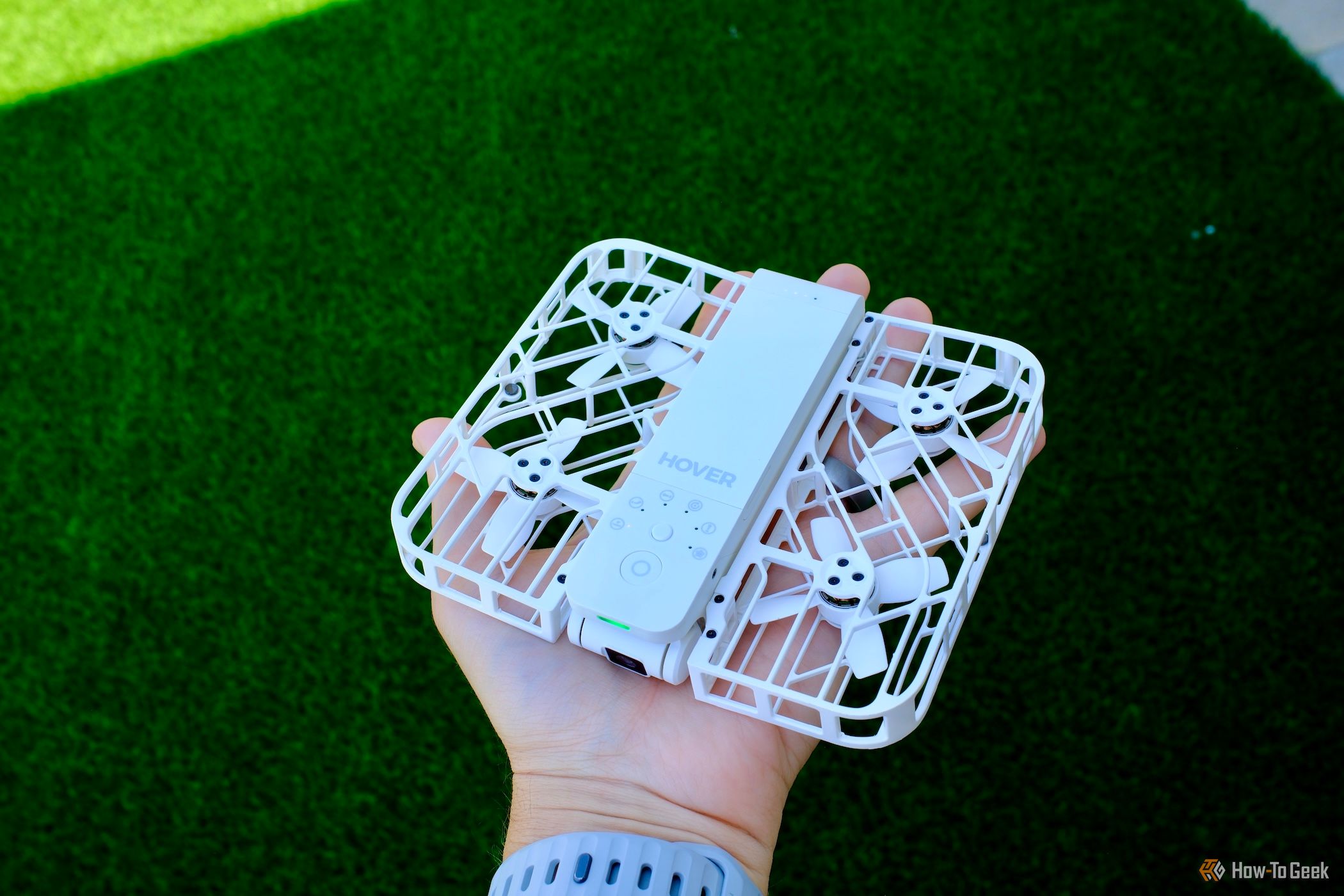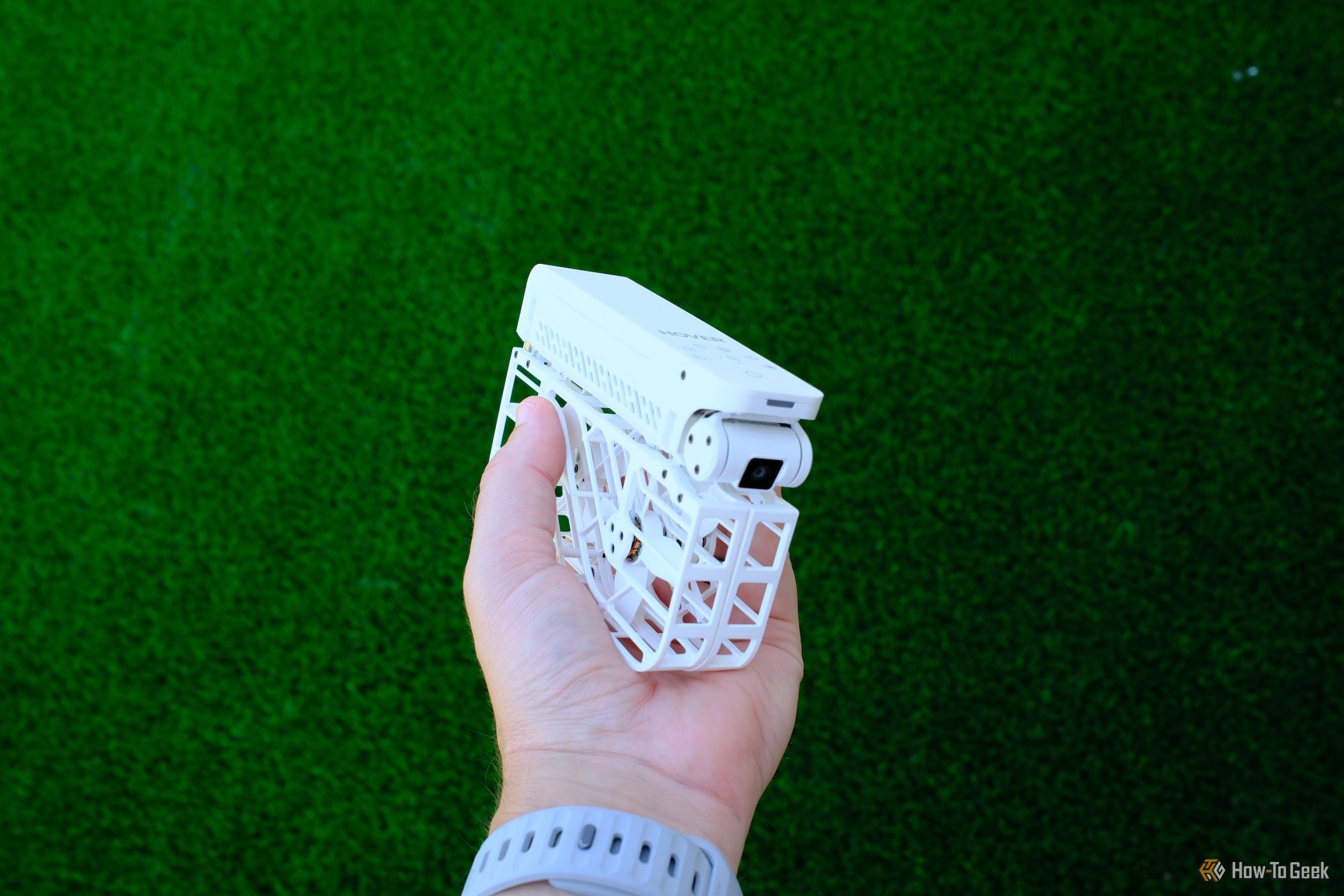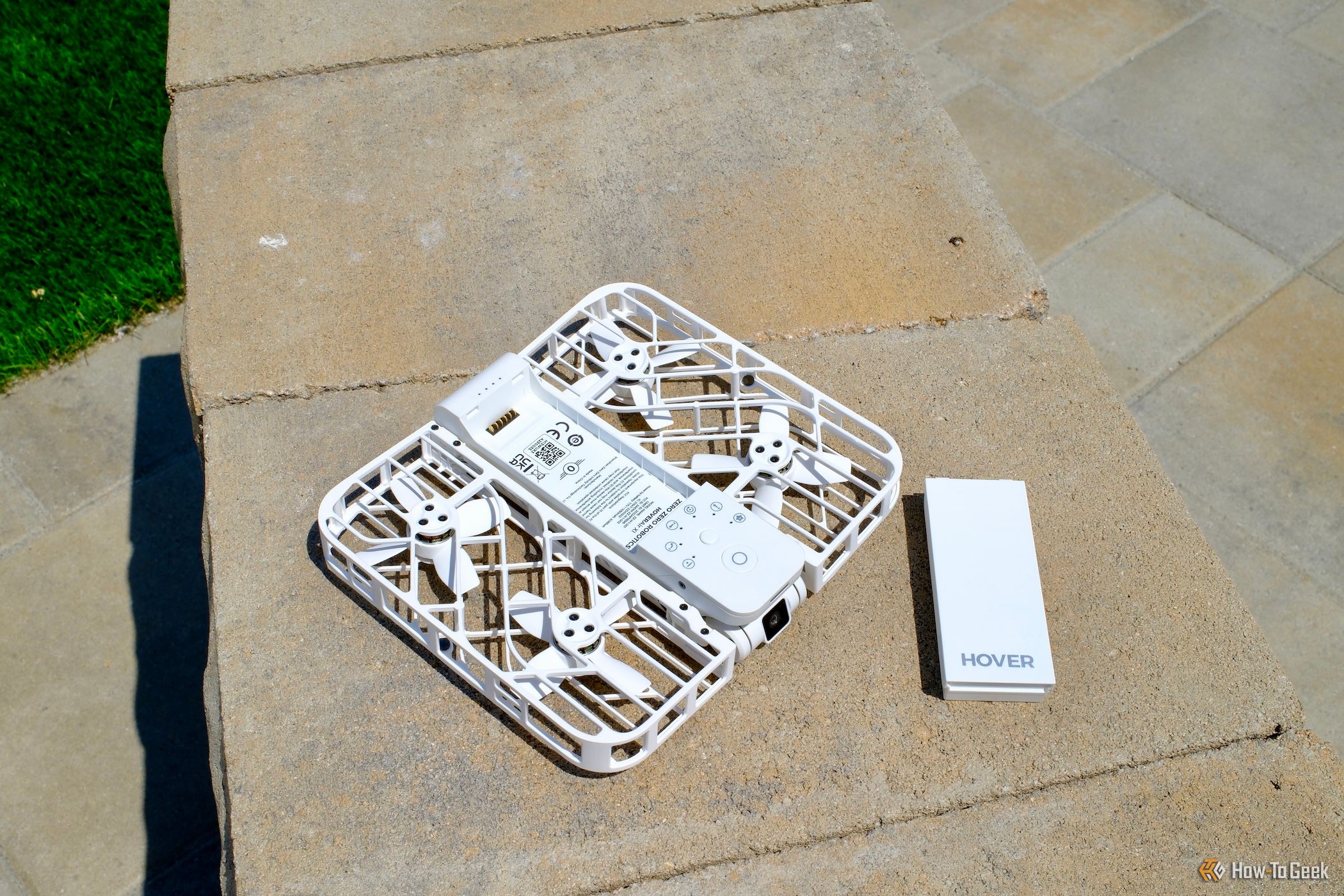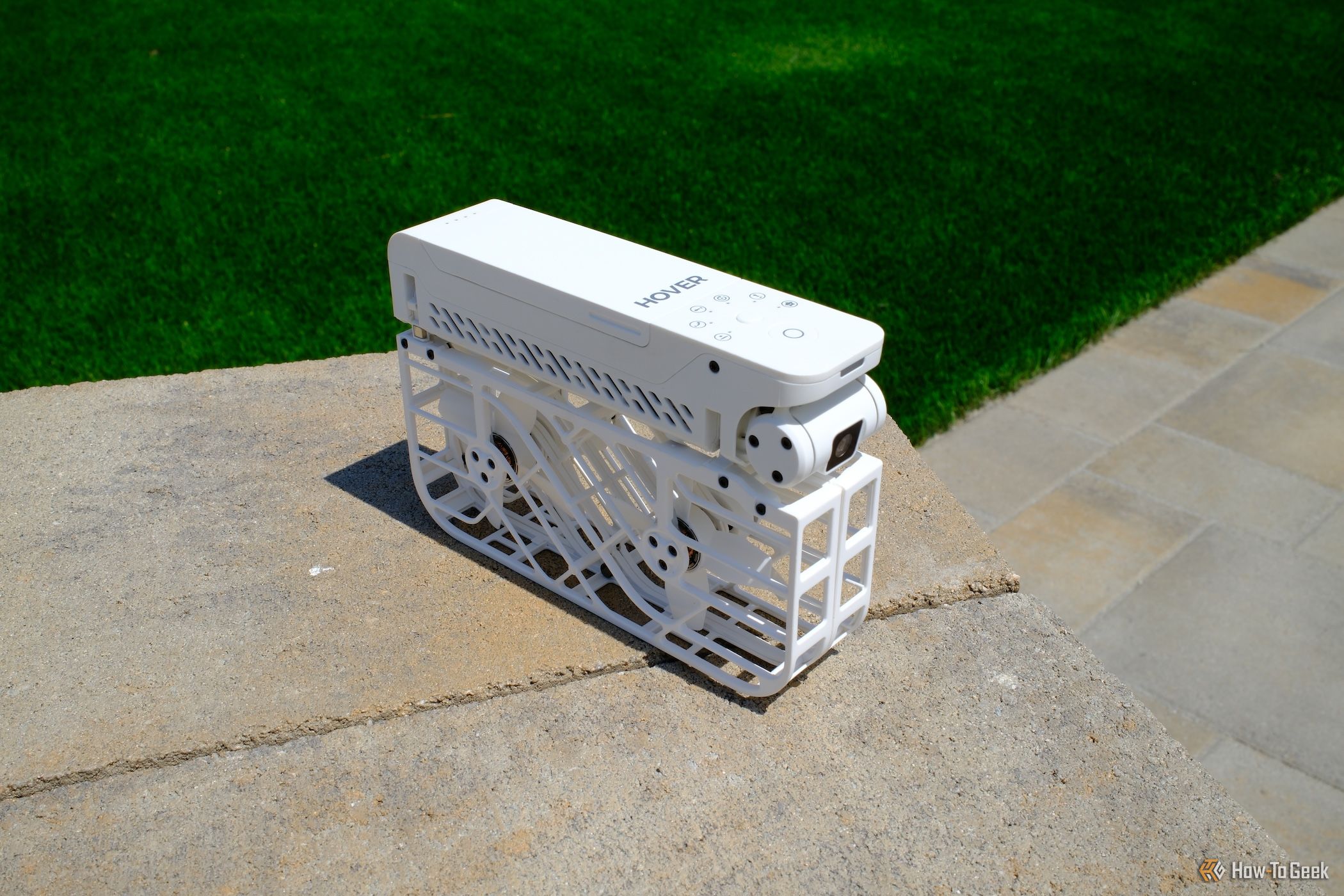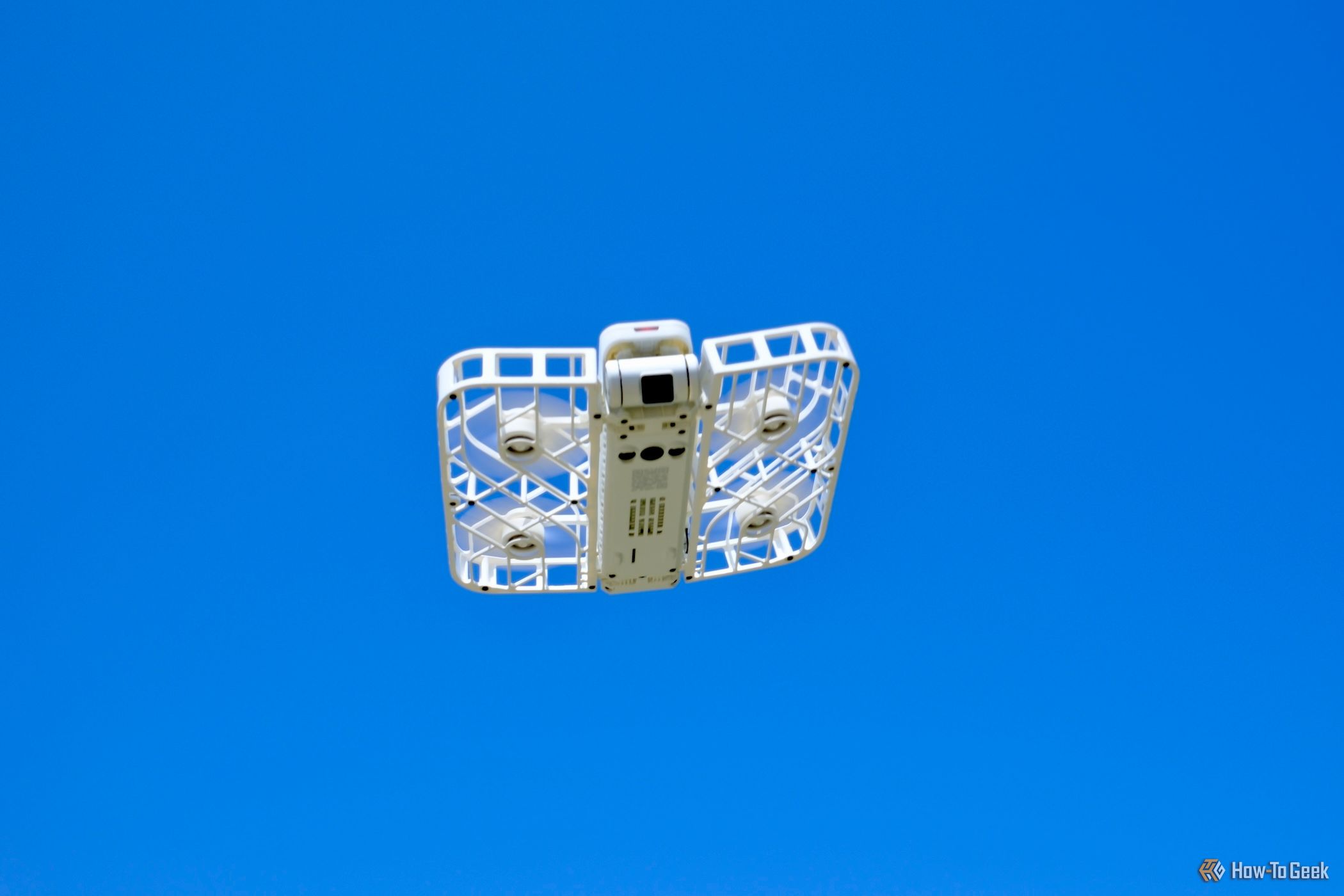Key Takeaways
- The HoverAir X1 self-flying drone is a user-friendly gadget perfect for capturing moments on the go effortlessly.
- It is compact, lightweight, and easy to handle, offering good-quality video and image stabilization for smooth shots.
- The main concern is the short battery life, but adding extra batteries and a dual charger can solve that issue.
The HoverAir X1 self-flying drone is more of a fancy, selfie camera than it is a complicated aircraft. It takes about the same amount of work to use as putting your phone into a selfie stick. Select one of several video (or photo) modes and let it do its thing, automatically, on its own to capture the moment. It’s wonderful.
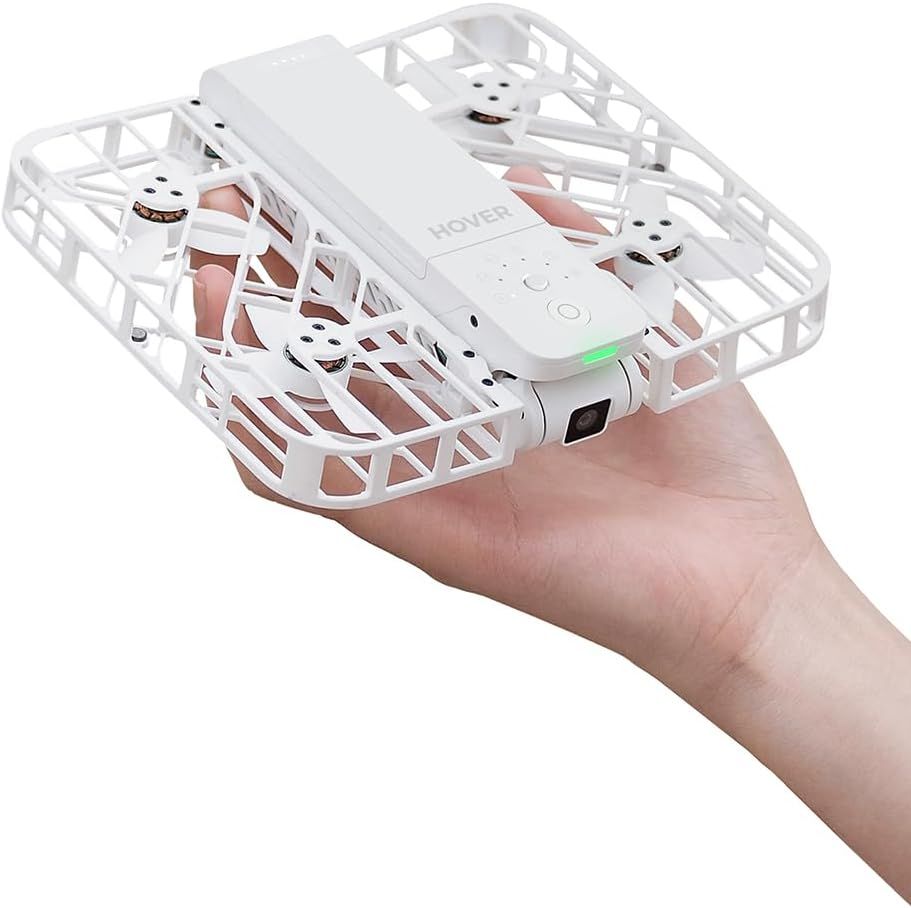
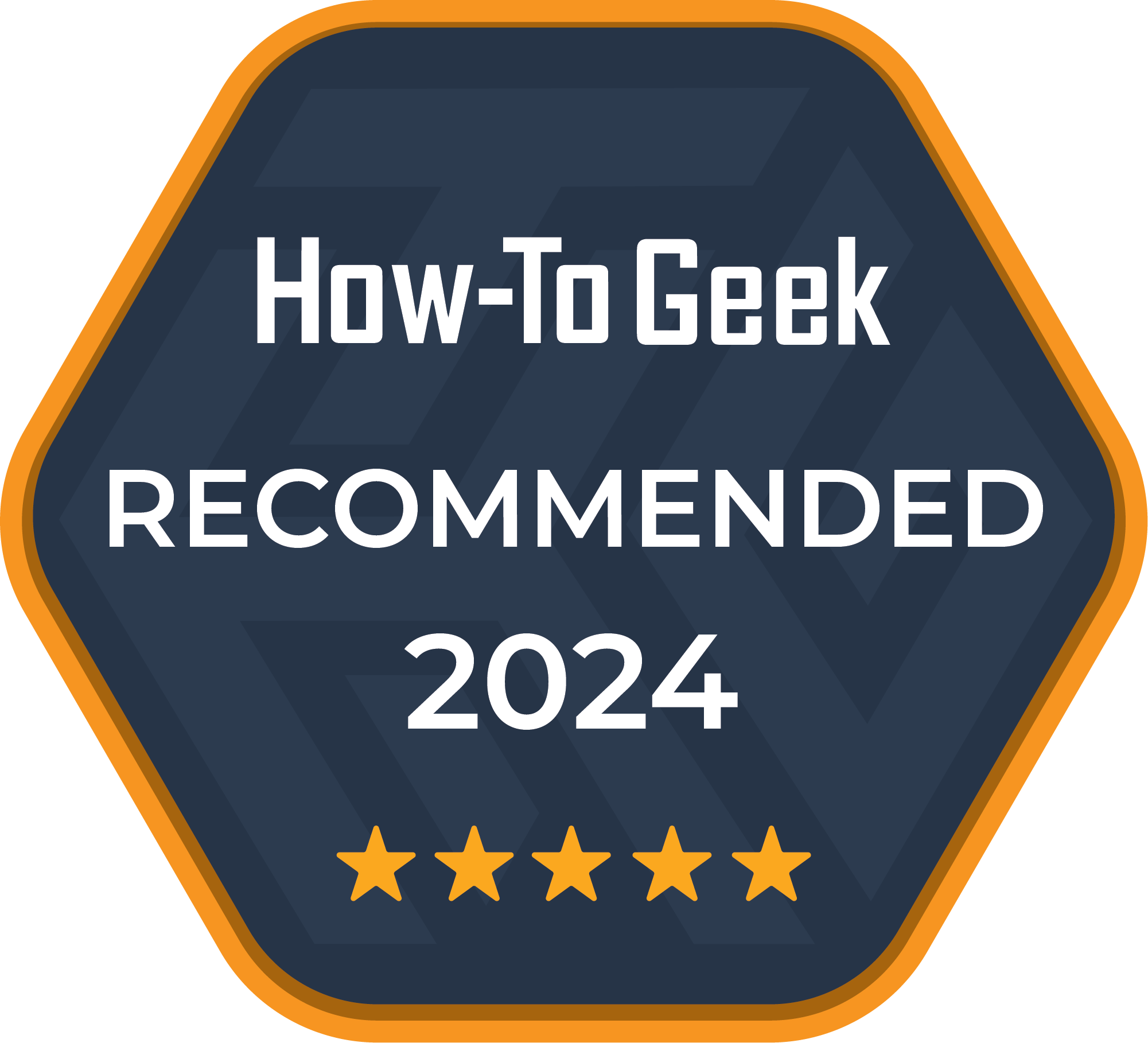
HoverAir X1
$349 $429 Save $80
The HoverAir X1 self-flying camera is simple and user-friendly. It takes off from your palm with one click, making it easy to capture moments on the go. It has 32GB of internal storage, eliminating the need for an SD card.
- Small and lightweight
- Good quality video and image stabilization
- Super easy to fly and handle
- Short battery life
- Can be susceptible to windy conditions
Price and Availability
The HoverAir X1 is available for purchase now and retails for $429 with a single battery. The Combo package includes an extra battery and a two-port charging hub. The Combo Plus package includes three batteries in total and the two-port charger and retails for $519.
A New Kind of Drone
Although there are plenty of technically impressive drones out there, even those with automatic flying assistance can still require a lot of attention to get the hang of. I was able to get the X1 out of its box, register it through its mobile app, and let it take an initial flight, all within 15 minutes.
It makes more sense if you think of the X1 as a camera. HoverAir even calls it a self-flying camera. For times you want to make sure everyone gets in the shot, the X1 functions as an invisible camera person.
When folded up, the HoverAir X1 fits in the palm of a hand. It might even fit in some back jeans pocket. It’s not much larger when unfolded either. Because the 125-gram drone is so compact that it’s exempt from FAA regulations. You don’t need to register it.
The squared-off plastic grille around the propellers acts as protection. It can be handled by anyone. My 11-year-old started a flight session and landed it on her palm.
Made for Family and Friends
The problem with shooting more traditional drone photography is that it’s usually a significant investment to get some random shots of your rooftop or trees at a local park. I’ve lost interest in several drones over the years because I’ve never had a regular use to justify their continued use after a few weeks.
The HoverAir X1 has been my most used drone because it ditches a controller and makes it easy to capture videos. Instead of learning how to fly it or fussing with technical details, I’ve only had to worry about when to use this selfie drone to capture memories.
That’s at the heart of what makes the HoverAir X1 so good: its single purpose. There are five dedicated flight paths built into the drone, selectable by tapping its single button, and one customizable flight path.
Don’t worry if that sounds limited because, inside its mobile app, several different customizations can be made to each of the paths. For example, you can personalize how far out you want the zoom-out mode to travel. You can decide the height of the bird’s eye mode, along with different resolutions and whether the camera is fixed on you as a target or not.
To take a video you hold it in your hand, press the single button, and it takes off. When it’s recording the front light turns red.
Although different events and times will call for the use of different modes, my favorite is the zoom-out. Similarly, I liked the bird’s eye mode because I didn’t have to call people over or disrupt anything. I could let it fly (up to 50 feet high) and capture the scene and then come straight back down.
I thought the default 2.7K resolution at 30 frames per second (FPS) looked fantastic, especially on a phone. You could see its limits on a larger TV, but it still looked good to my eyes. More impressive, however, was the image stabilization. It held its own in flight and almost always looked smooth.
Picture image quality isn’t as good as a modern Pro iPhone, but it’s good enough to capture a memory. You probably won’t regret taking most photos with the X1, but for any important family photo, you’ll still want at least one with a better camera.
The few hiccups it did have with video recording were from wind, but even heavy gusts didn’t disrupt it as much as I thought it would. It’s a very small, lightweight device that can overcome a fair amount of breeze and wind.
However, I wouldn’t have the same trust in this drone from the side of a 100-foot cliff the way I might in a mid-range DJI one. If it does fail suddenly it might be hard to get it back.
HoverAir claims the X1 can track a subject and follow them at 15 miles per hour. I did a running lap around a park, and while I probably wasn’t hitting that top speed, it did manage to keep up with my steady pace.
The Battery Situation Is the Main Concern
Before getting too far down the path of how great this drone is, it’s important to discuss the battery life. The flight time and overall battery life are the X1’s biggest hurdles and most obvious downsides. HoverAir says the flight time is 11 minutes, but in my experience, I think a more realistic estimate is 6 to 8 minutes.
Be prepared to constantly charge the device or switch the battery out for a fresh one. The short time sounds bad, but in my experience, it was still completely usable. Even at the low end, I could still get at least 10 to 12 videos before the battery got too low.
The overall length will depend on which modes you tend to use the most. For example, the bird’s eye or zoom-out flight modes perform standard, short, tasks, whereas the hover and follow modes can have extended use that goes on until you stop it.
It’s a must to consider the cost of adding at least one extra battery to the price of the drone. No matter how conservative you are or how little you use it at a time, you’ll want a second battery. I would also recommend the dual charger as an accessory to highly consider.
Thankfully, carrying a second or third battery doesn’t add much weight or size. You might not even feel the extra accessories. There is a USB-C port directly on the drone you can you for charging. I used that method some, but I preferred the two-port charger.
The Mobile App Provides Helpful Animations
Although no controller is needed, you will need to use the app semi-frequently to tweak the flight paths and download the videos it captured.
Generally, needing to connect a device to its app can be a pain but the Hover app (available for iPhone and Android) has been about as good as I hoped it would be. I’ve used it frequently to change flight paths and download videos. Connecting to its Wi-Fi network will download a 30-second video to your phone in a few seconds.
There’s 32GB of storage on board the X1 drone. My first 36 videos—roughly 30 to 90 seconds each—have taken up about 4GB of storage. I’ve downloaded each one to my phone and then shared some to other devices, so I don’t feel the need to keep them all on the device. Unlike the battery life, I just don’t see a scenario where the amount of storage limits anything.
The other thing I appreciated about the app, as I was getting started, was that it had short animations to show what each intelligent flight did. I needed to reference the short loops a few times early on to jog my memory about what each mode does and it was super handy.
Should You Buy HoverAir X1?
The HoverAir X1 self-flying drone has quickly become one of my favorite gadgets that I’ve used this year. Its simplicity made it easy to use quickly, while its photography skills captured stunning perspectives.
Ultimately though, it’s just a lot of fun and can be a videographer when everyone wants to be in the shot, or you’re capturing content solo.
The lingering downside is the short battery life. You will want a second battery, if not more. That raises the cost. The several hundred dollar price of the X1 makes it more of a value for content creators and people who need regular aerial shots. But I’ve found a lot of enjoyment from using it with my family. It’s a versatile little flying machine.


HoverAir X1
$349 $429 Save $80
The HoverAir X1 self-flying camera is simple and user-friendly. It takes off from your palm with one click, making it easy to capture moments on the go. It has 32GB of internal storage, eliminating the need for an SD card.


